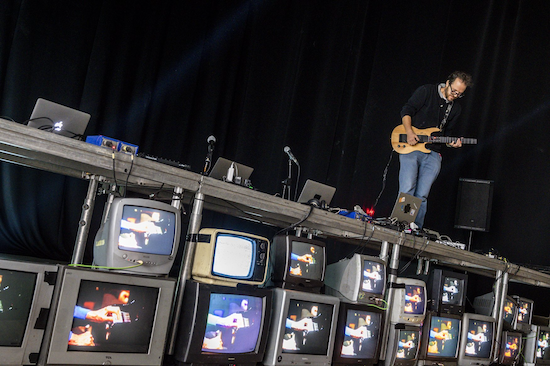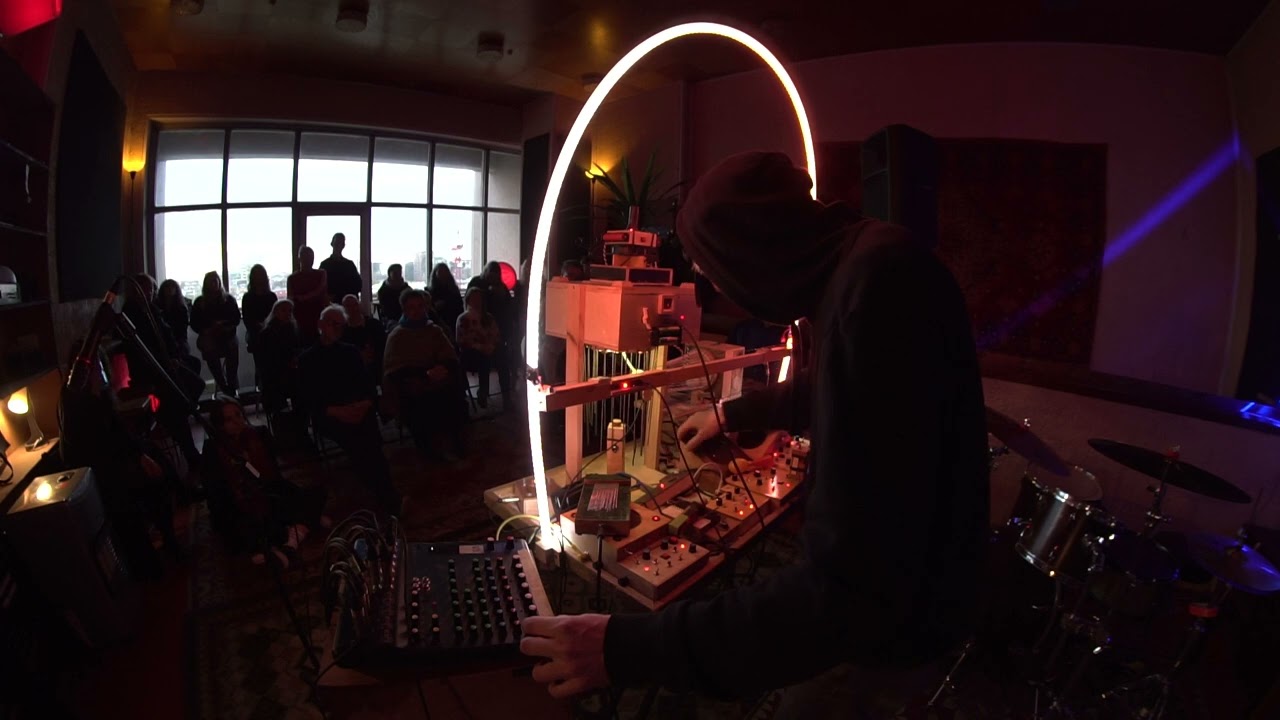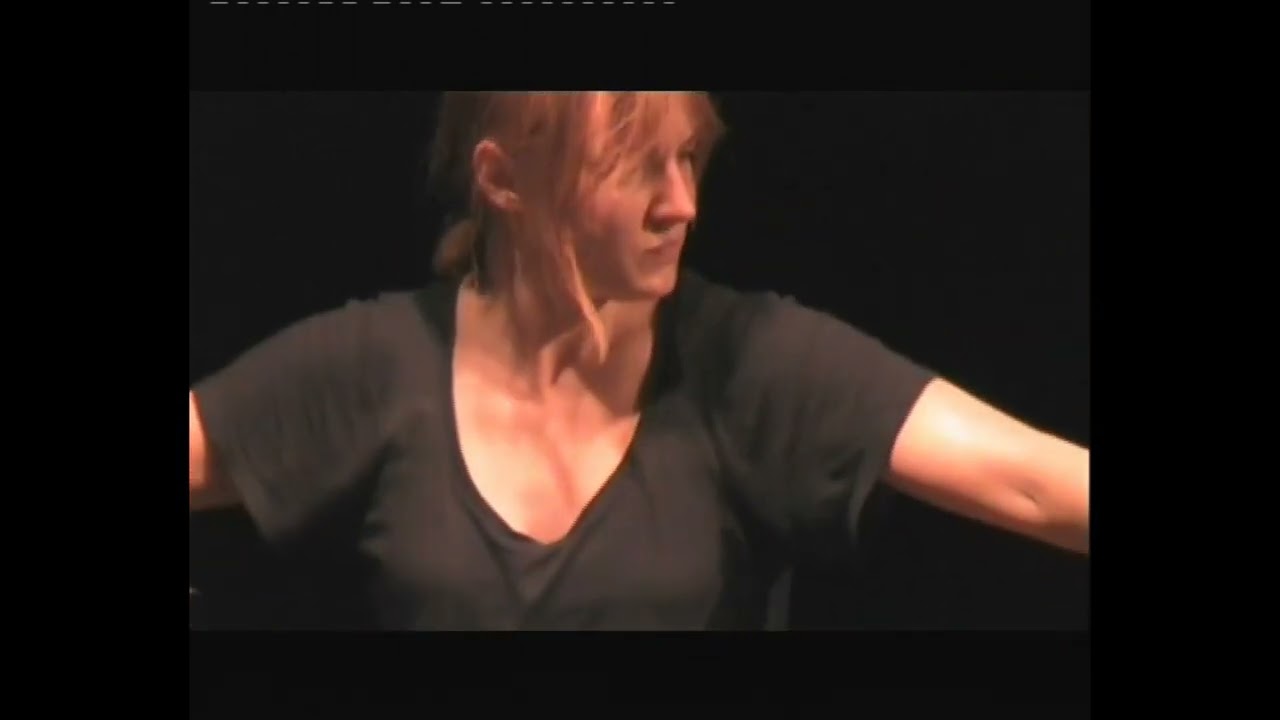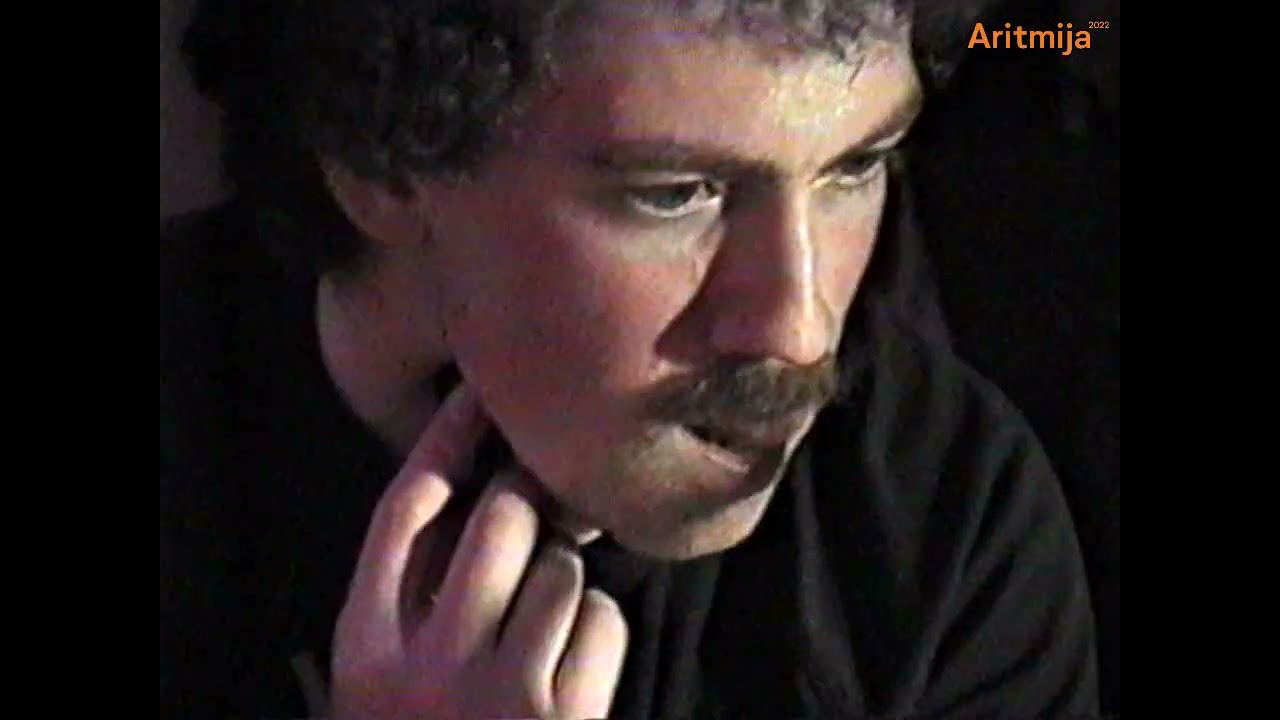Robotic Folk
I remember fervently leafing through Glissando, a Polish magazine dedicated to contemporary and avant-garde music, each issue of which focused on specific theme or country. In 2009, one was devoted to Lithuania – a country with longstanding ties to Poland, but at the same time musically unappreciated. Back then, perhaps the first name I really heard from the Lithuanian scene was Arturas Bumšteinas. By now he’s been releasing recordings for over 20 years, engaging in experimental music, acoustic sound works, installations, and pieces for theatre and radio. With unbridled curiosity, I continued reading about artists such as Gintas K and Šarūnas Nakas, among others.
Promoting the output of the Lithuanian scene is handled by Music Information Centre Lithuania, which was established in the 1990s. Then, its mission was to purchase digital and print copies of sheet music and records by Lithuanian composers, mainly from the academic music world. “We are now focusing not only on the academic music field but on various genres, says director Radvilė Buivydienė. “We own the biggest database on Lithuanian music, and a library in Vilnius. We also fight piracy in the intellectual property field because we have lost enormous amounts of income since independence in 1990.” They also run a small label dedicated to sound art and experimental folk, indie, and jazz music. Sometimes they release gems from their archive that might find new audiences after more than 35 years of existence, and sometimes work by newcomers. “Lithuania’s experimental and avant-garde music scene is very vivid and colorful – the younger generation brings a lot to every niche genre,” she concludes.
Another name through which I began to map the lore of the improvised scene in the country was No Business Records. The label started by releasing Lithuanian artists, but now you can find representatives from all over the world in their catalogue. Over time, the Lithuanian scene has revealed various nooks and crannies on the borderline of electronica and experimentation.There are venues, too, that work on the border of genres and artistic techniques. One the one hand there’s Loftas, one of the biggest in the country, and on the other the Nida Art Colony or Studium P.
Braille Satellite Festival is one of the brightest points on the Lithuanian music map, which promotes the Lithuanian scene (as well as music wider afield) and is located entirely on the sidelines. “The starting point was to do a festival that we would like to go to – to listen to bands that we are fans of,” explains Matas Labasauskas, one of the festival curators. “We try to create a solid lineup but only using our heads and hands, not with someone else’s money.” Labasauskas says it’s nationality isn’t that relevant when we speak about experimental scenes. “Experimental music is unique, coming from the inside of each creator, who is trying to play music as they imagine it. Experimentation can be in different aspects. One can use irregular instruments or equipment; others can sing very badly but find a way to match the instrumental part.”
He recommends to me a whole catalogue of bands such as Arma Agharta (“a legend though he is still super young”), Juozas Milasius, drummer Dalius Naujokaitis and some bands from art rock scenes in Vilnius, like Kanalizacija, Arklio Galia, and Laivo Troupe. He’s also involved in Radijo Musikii, a venue called Empty Brain Resort, and the label Big Band Alone, which releases undiscovered music from the past as well as newer recordings – mainly focusing on the music created in home studios.
Some of what I’ve written about below are not albums but performances and concerts, which is new for this column; I don’t feel that I can limit myself to releases while also showing the scene’s diversity. Labasauskas points out that the music industry has hitherto dictated that a ‘real’ artist needs to have a studio for rehearsals, play live concerts, and prepare releases. “It’s like a man needs to build the house, have some children, and maybe plant a tree. But it’s not true: there are a lot of outstanding artists that never played live concerts.” On the flipside, those who play concerts without releasing anything are similarly worth paying attention to.
Emer – Sea Salt
(Lillerne Tapes)
Marija Rasa lives in Brussels, with her debut album released on the Chicago-based label Lilerne Tapes. She studied at the Institute of Sonology in the Netherlands, pursuing an interest in composing for multi-channel loudspeakers and generating soundscapes from noise, electronics and field recordings. Sea Salt is colourful, appealing and delicate, focussed on texture. Gentle noise mixes with warm-sounding ambient electronics, hypnotic rhythms occasionally woven into the haze as in the title track. Sometimes there are vocal samples; at others, faint dub lines and a dreamlike, impressionistic mood mean a sense of fairy tale drama hovers over the whole.
Gintas K – Resonances
(Sloow Tapes)
Gintas Kraptavičius was once a member of the industrial band Modus, and afterimages of their music can often be heard in the cold, metallic nature of his solo work. Resonances comes from a live session where he used a computer, a midi keyboard, and a controller. He modulates sounds, slows down and speeds up the layers, and sinks into sound waves and musical constellations. At the same time, he keeps an eye on structures – the compositions are relatively short, apart from two which reach eight minutes. Overpowering drones rumble from one side, a mass of noise and interweaving atmospheric layers from the other – an impressively constructed mesh of sonic sketches.
Robotic Folk – Volume One
(LOM)
Jonas Jurkūnas explores both academic and pop music; he’s an improviser, an electronic musician, and also composes for chamber orchestra. Since 2008 he has been a member of the electronic music collective Diissc Orchestra, drawing on samples, pulsating rhythms, and layered beats that range from minimalism to maximalism. On his new solo album, subtitled ‘Artefacts Of Human Civilisation In Robotic Folklore’, he conjures a dystopian future in which robots draw upon folk tales of their own. Rather than flirting with AI, he treats our mechanical descendants humanely, imagining what it would be like if they could let their imagination run wild, mixing patterns from indigenous music, afterimages of folk motifs, glitches, monumental forms, and airy melodies, interspersed with futuristic-sounding vocalisations. The result is brilliant, erudite, yet engaging.
Gimė-Mirė – Pavasario Vakarai Vis Ilgyn
(Tapekiosk)
Rytis Koreniukas has created the sonic equivalent of found footage. Where situationists would join together all sorts of video to create a new story, with a playful instinct he does this with sounds. (It’s unsurprising that his background lies in composing music for the film industry). Except that he doesn’t build substantial pieces out of the sounds but rather a surreal world full of mellow and spacey sounds, lo-fi loops, broken percussion structures, excellent synth lines and metallic beats. Sometimes melancholic-sounding melodies emerge; at others, Not Fun Records-style synth mayhem. The music sounds intimate and dreamlike, sometimes stumbling and glitchy, sometimes unleashing pure trip-hop acid.
Marijus Aleksa – As They Are
(MIClithuania)
Drummer Marijus Aleksa has many facets. In my recap of last year, I wrote about his duo <a href=” https://thequietus.com/articles/32454-best-central-eastern-european-music-2022” target=”out”>Santaka, but his solo efforts deserve attention too. ‘Solo’ doesn’t quite reflect the truth, this time around, as two dozen musicians contribute to As They Are, with Aleksa exploring similar regions to Makaya McCraven or Sons Of Kemet with the the Lithuanian jazz scene in tow. He neatly eschews simple associations, searching for his own musical language. For example, in ‘Thing(s)’ and ‘As They Are’, percussive structures are followed by a dense synth sound; later on, there is no lack of electronic layers and arrangements. Aleksa has recorded an album rich in sound, full of various compositional and performance ideas, pulsating and intense, that swings between the Chicago scene and folk music.
Arturas Bumšteinas – So-Called Space
(Sloow Tapes)
Bumšteinas’s work is based on randomly selected music from dozens of Lithuanian radio dramas from 1950 to 2000. The composer plays with juxtapositions, taking recordings out of their original contexts, adding new ones, and arranging the dramaturgy in an altered and often confusing form. Musical samples pass through stages, from ambient contemplations to orchestral overtures to solo instrumental parts. Combined, they become an abstract collage, in which these elements are gradually arranged into a cacophonous but narratively coherent composition. Sometimes the tension rises, only to fall slack a moment later.
Kosmetika – 46
(Musikii)
Kosmetika is a band formed out of nowhere between two friends, who quickly recorded two mini-albums which are challenging to find on the web because of the name. On 46, they emotionally combine the inspirations of krautrock and Spacemen 3, keeping everything within the grip of lo-fi rock in the style of Ariel Pink. Shoegaze walls of guitars and drum machines build a rushed, psychedelic bedroom pop vibe with a dose of space and no-holds-barred force. On the one hand, they can sound lyrical and a bit folky (‘Kaip Gerai’); on the other hand, they play without restraint with dense guitars (‘Stasys Vilnius’), sometimes turning into post-Suicide trance (‘Daina Meškei’) or quasi-Talking heads, especially vocally (‘Šita daina’).
Simonas Nekrošius – Live At OPERA (2022)
Simonas Nekrošius is a talented builder of DIY instruments and a prime example of how to think about music more broadly – its sound, its format, and its live presentation. His set reminds me of Joasihno, who also uses hand-made sound-object instruments. He calls them ‘paraobjects’, which combine unconventional methods and principles of sound generation. Firstly, they provide him new possibilities, with which he reaches for impressionistic, dreamlike sounds akin to William Basinski or Philip Jeck. In contrast, he often dives into dense and harsh electronic motifs. Nekrošius maneuvers between the serious and the absurd, with the visual appearance of the instrument playing with our expectations.
Auguste Vickunaite – Live At Fylkingen (2022)
Simonas Nekrosius, Auguste Vickunaite, and Kamilė Dambrauskaite founded the project Sinkhole, The Beautiful (playing Braille Satellite this year), whose recordings I have yet to find but are worth dissecting via this live performance. Vickunaite loops the music, plays with the texture and tempo of the sound, and draws attention to how it stratifies. She creates a psychedelic drilling structure, manipulating tapes and emphasising distortion, all in a strictly analog way. The physical movement of the hands is essential here; ‘hand-made’ music in the truest sense. That said, living musical tissue is met with layered sounds; raw, aggressive, highly mechanised and to say the least, futuristic. Amplified mechanics of the tape machines and the sounds of their malfunctions are also part of the performance sound.
Alanas Gurinas – Live At Aritmija (2022)
Frank Zappa ight have played the bicycle, but Alanas Gurinas has reached for a skateboard, wired up and then ridden on top of a treadmill. When you close your eyes, this performance at the Artmija festival has an acidic drone, a hauntological sound that finds its outlet in a shrill, slowed-down moan. Later, however, Gurinas – and this is the most interesting part – treats his strange set-up more like a tape carrier or turntable, where the loop is the starting point for exploring colors and textures. I don’t want to spoil it, but by the end he’s wearing polystyrene shoes; it’s more than worth watching in its entirety.
Šarūnas Nakas – Ramblings
(MIClithuania)
Šarūnas Nakas’ recordings are proof that the fact that the Lithuanian scene’s experiments are not limited to the last decade, but have spread in various formations over the half a century. The music of a Lithuanian composer from 1985, made for a dance ballet, doesn’t sound like a soundtrack; his avant-garde ideas are better associated with Dadaism and Merz art. ‘Lonelier Than All Of Us’ recalls the music of Lea Bertucci or Dickie Landry. Electroacoustic experiments include ‘Merz-Machine’ for 33 electronic and acoustic instruments or ‘Vox-Machine’ for 25 electronically modified voices. Lithuanians have always been good when it comes to creating the most bizarre and surreal of music.





